

I am a lifelong collector of stamps and postal history and a full-time professional philatelist since 1979.
By Abhishek Bhuwalka
This interview was first published in The Philatelic Literature Review Vol. 69 No. 3 (Third Quarter 2020).
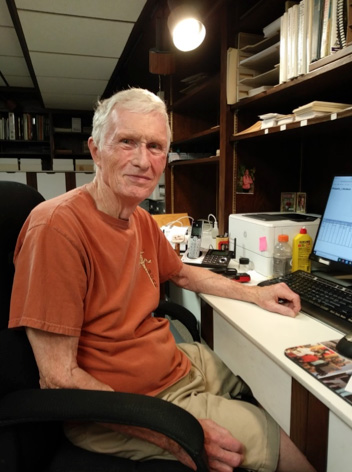
After my previous interview with Burkhard Schneider of philabooks.com, which was published in the 2nd Quarter 2020 of The Philatelic Literature Review, I was keen to interview Phil Bansner (Philip T. Bansner in full). Phil runs a website bearing his name and deals in mainly US-centric stamps, postal history, and yes, philatelic literature; he calls himself a “professional philatelist.” While browsing through past issues of the Review, I realised that I had never come across his interview or detailed profile.
Phil indeed has a very different modus-operandi as compared to other dealers. To a question on his interactions with famous collectors and other dealers as well as important philatelic purchases, he says (and I suspect very honestly), “I never did buy a famous collection or meet with a famous literature collector. I have not owned individual titles of great rarity.” This is probably an understatement since I have personally seen important titles of philatelic literature in his online shop, for example a couple of Fournier Forgeries Albums, a set of the Ferrari auction catalogues, or The Postage Stamps of Switzerland by Mirabaud and Reuterskiöld, which I was lucky enough to have bought.
PHIL, PLEASE TELL ME ABOUT YOURSELF.
I was born in 1943 and raised in West Reading, PA. My dad Reinhold was in the printing business and my mother Evelyn was an elementary school teacher. I have an older sister Carol that has several degrees in the space science field; her work really is rocket science. I graduated from West Reading High School in 1961 and Penn State University in 1964, then spent two years in the military. Upon leaving the military I returned home and was hired by a local bank in their management training program. I switched banks once and remained in banking until 1979. I have two grown children, Brad and Karen, and two grandchildren, Benjamin and Isabella, who live within fifteen minutes of my home. These, of course, are the two best grandchildren in the world. I was married to my now deceased wife Beverly for 55 wonderful years. She rarely came with me to stamp shows as she was very busy at home bearing the brunt of the work in raising two wonderful children; all of us in the family still miss her greatly.
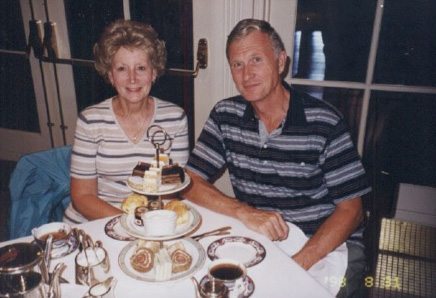
WERE YOU A STAMP COLLECTOR SINCE YOUR CHILDHOOD? OR DID YOU GET INTO IT MUCH LATER?
I was first introduced to stamps when I joined a fifth-grade school activities stamp collecting club. My dad gave me a stamp album with a large assortment of United States and worldwide stamps. Dad was not a collector but had received the stamps in order to collect a debt. I liked studying and researching the stamps as we club members traded duplicates. I kept at the hobby during my high school years. I had a paper route and would use my earnings to buy stamps (instead of baseball cards) from a local stamp dealer by the name of Philip Burtner. Many years later I purchased the balance of Mr. Burtner’s philatelic estate
WHAT MADE YOU BECOME A DEALER IN 1975?
During the early 1970s I became more serious about my stamp collection. I traded off all my old collections and started concentrating on United States very fine mint never hinged stamps. I was good friends with a local stamp dealer name Bob Gantner who introduced me to stamp shows. He eventually took me along to shows as a helper and was my introduction to stamp dealing. In 1975 I met with show organizer Dick Bower and obtained a table at his monthly stamp show in Sommerville, New Jersey. That started a five year period during which I was a part time stamp show dealer while also maintaining a career as a mortgage banker.
I became part time stamp dealer while maintaining my career as a mortgage banker. I joined the APS in September of 1975. I liked the way they were organized and felt they were in tune with the stamp collecting community. Their monthly publication is the best in their field. I am proud that I am a member of this fine organization. During my first years as a dealer I published price lists and attended local stamp shows. I concentrated on United States stamps both front and back of the book.
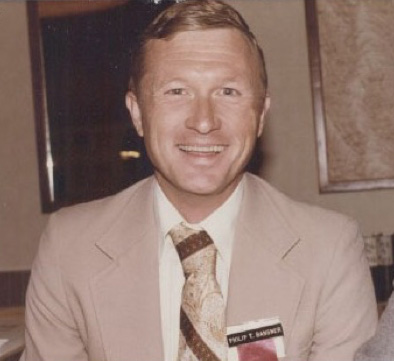
HOW DID YOU TRANSITION TO DEALING FULL-TIME IN PHILATELY IN 1979?
During the late 1970s there was a recession that greatly impacted the mortgage business. I was a mortgage banker without any money to lend. I knew my banking career was in jeopardy. I resigned my banking position and went to work full time as a professional philatelist. I joined the ASDA in 1979 so that I could attend their large regional shows.
The 1980s were hectic with a growing stamp business and active family life. I was a regular at stamp auctions such as Robert A. Siegel, William A. Fox, Harmer’s of New York, “Simmy’s”, Daniel Kelleher, Richard Frajola, and John Kaufmann to name a few. I diversified my stamp holdings, taking positions in back of the book issues including proofs and essays, revenue issues, and match and medicine stamps. I also started acquiring foreign stamps, worldwide philatelic literature, and U.S. advertising covers.
HOW DID THE STAMP RECESSION OF THE 1980S IMPACT YOU?
This was pre-Internet. Stamp prices declined dramatically. My inventory was not selling. One week I repriced my entire inventory to reflect the current market. My inventory started to sell at the new price levels. Fortunately I was in a position to withstand the downturn.
YOU HAVE OCCUPIED VARIOUS ORGANISATIONAL POSTS WITH THE AMERICAN STAMP DEALERS ASSOCIATION (ASDA) AND WITH THE AMERICAN PHILATELIC RESEARCH LIBRARY (APRL). TELL US MORE ABOUT THEM?
I met ASDA Executive Director Joseph Savarese and started a long term business and personal relationship. “Joe” was a very dedicated employee, always giving 110% to his job. Beginning 1987 I started to do service work for the ASDA and became involved as a board member, ethics committee chairman, Vice President, and two-term President from 1996 to 1999. This was the time of Arthur Morowitz, Lewis Kaufmann, Bob Feldman, and many other dedicated ASDA members. The Board of Directors worked for the interests of the ASDA, there was co-operation with other philatelic societies and well as the U.S. Postal Service. This work was very satisfying. I ended my work for the ASDA in 1999 but am still a proud member of the organization.
During the 1990s I worked with the very talented and very personable Ginny Horn, the librarian of the APRL, then located in State College. The management of the library was in great hands. I became a trustee and also President of the board of the APRL. During this time the APS made the decision to move lock, stock, and barrel to the Match Factory building. This has turned out to be a very wise decision as the building is a great place for the employees to work and is financially very stable. I am personally happy with the finances as I signed the mortgage and note for the APRL, the owner of the facility.
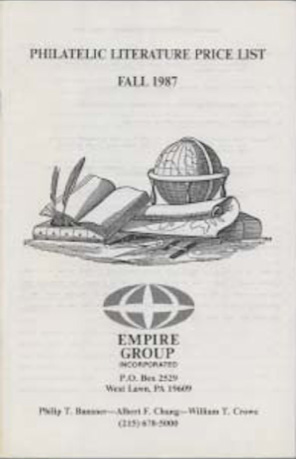
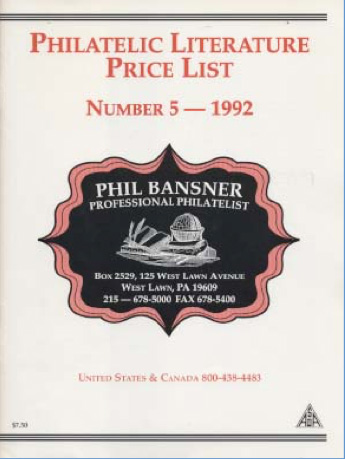
Empire Group's Fall 1987 Philatelic Literature Price List.
Phil Bansner's Number 5 (1992) Philatelic Literature Price List.
HOW DID YOU GET INTO PHILATELIC LITERATURE? I HAVE SEEN YOUR PRICE LISTS FOR SALE. TELL US ABOUT THEM. WERE THEY FOR ONLY PHILATELIC LITERATURE OR FOR BOTH PHILATELIC LITERATURE AND PHILATELY?
My move into philatelic literature was spurred by the purchase of four large libraries within six months. I was fortunate to have the space in a building I owned and the valued assistance of my good friend, stamp expert, and fellow dealer William T. Crowe. Between 1987 and 1997 I published eight extensive price lists of U.S. and Foreign reference works, journals, and auction catalogues; the first three were under the ‘Empire Group’ and the others under my own name. They was mainly done on “Bookmaster” the software program developed by the very creative Tom Sawyer of upstate New York.
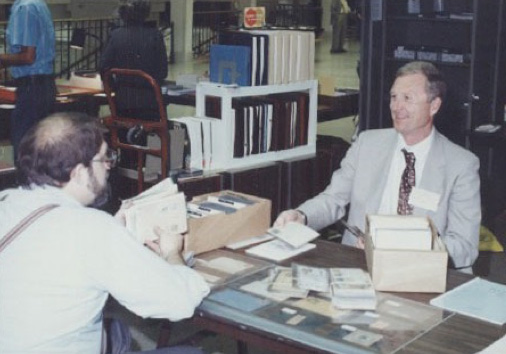
OVER PHONE, YOU SAID THAT, AS A DEALER, YOU WERE A REGULAR AT STAMP SHOWS UNTIL 1997 WHEN YOU STARTED YOUR WEBSITE. WHAT MADE YOU DECIDE TO DISCONTINUE WITH SHOWS SINCE MANY DEALERS DO BOTH?
During the 1990s I was doing shows buying and selling U.S stamps, postal history, and worldwide philatelic literature. My good friend and postal historian Elwyn Doubleday joined me and my postal history inventory was greatly expanded. In addition to shows we did mail order sales to individual collectors by sending photocopies of items they might like. Elwyn remained with me for several exciting years. I was sorry to lose him went he returned to New Hampshire.
I made a major move in 1997 when I left the show circuit and began working from home. The increasing difficulty of travel and the desire to spend more time at home were important factors in this change. I also downsized my entire staff so I was truly a sole proprietor. I took my time on the downsizing so that no one became unemployed. My sister Carol (the rocket scientist) had been using the pre-commercial Internet for several years and recommended that I give the commercial version a try. My son Brad, a computer programmer, natural artist, and web site host developed my site and keeps it up to date. I started entering items onto my web site and was amazed when one day someone found me and made a purchase. No longer was there a need to use the mail for selling. With Covid-19 being the cause of the cancellation of many stamp shows, it turns out the Internet is now a major philatelic arena.
SO YOU MUST HAVE CUSTOMERS FROM ACROSS THE WORLD?
Most of my clients are from the U.S. followed by Canada, Great Britain, Europe, Australia, and the Far East. The least are from Africa and Central/South America. I estimate that I make sales in 30-40 countries.
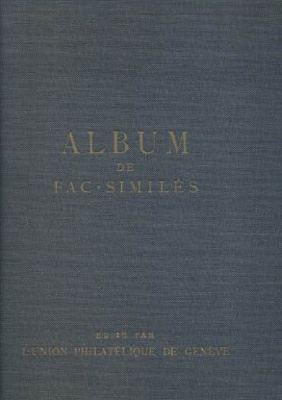
WHAT POTENTIAL OF YOUR SALES WOULD BE SPLIT BETWEEN PHILATELIC LITERATURE AND POSTAL HISTORY/STAMPS?
My best estimate is 40% stamps, 35% postal history, and 25% literature.
YOUR WEBSITE HAS SOME 90,000+ ITEMS OF POSTAL HISTORY AND STAMPS AND SOME 4,200 ITEMS OF PHILATELIC LITERATURE. ALMOST ALL OF THEM SEEM TO BE SCANNED AND DESCRIBED, WHICH IS TREMENDOUS. DO YOU EMPLOY SOMEONE TO HELP YOU OUT WITH YOUR BUSINESS?
I do everything. I am the buyer, the describer, scanner, make input to the web site, and take out, pack and ship orders. I do the bookkeeping but let the accounting to a professional.
MOST PHILATELIC LITERATURE DEALERS DO NOT STOCK NEW BOOKS DUE TO LOW MARGINS? DID YOU EVERY STOCK THEM YOURSELF?
I do not have the time, storage space, or specialised knowledge it takes to handle the large volume of new publications that enter the hobby each year. That is the main reason I restrict my purchases to the after-market.
MOST LITERATURE DEALERS THAT I HAVE INTERVIEWED DO NOT STOCK LONG RUNS OF JOURNALS. WHY HAS IT BECOME DIFFICULT TO DEAL IN ITEM? IS IT DUE TO HIGH SHIPPING COSTS ALONE?
Working with journals and periodicals has many challenges beside them taking up a lot of storage space. It seems that most societies are going digital with fully researchable databases. Why use several feet of shelf space when you can get something better on a ¼ inch disk? Editing and updating is simple, you can publish a new edition whenever you wish. However, there are many short run papers and journals that were proliferate during the late 19th and early 20th Century. These are quite collectible and can be a niche for a literature dealer. Getting the actual product is the difficult part. I once came across a lot of several thousand such papers. After careful consideration I decided that the APRL would be the best place for these to be documented. They were very appreciative of the donation.
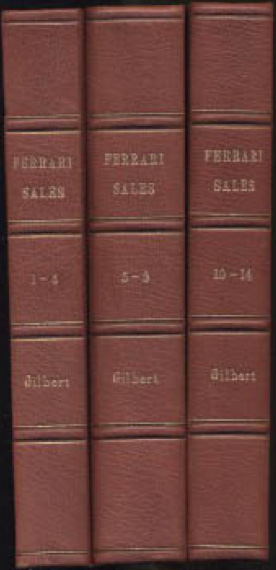
HOW DO YOU DESCRIBE YOUR PHILATELIC LITERATURE STOCK?
I skim each title that crosses my desk, not only for condition but for content. It allows me to gain insight about different stamp issues and postal history. I may digress from my write-up work to do an in depth reading of a title that I find particularly interesting. Great for the mind but does little for the check book. I wish I had the memory capacity to have stored the content on over 15,000 titles in my database. I made a good decision when I expanded into the philatelic literature business; I feel I have done something that benefits the entire hobby. It has been successful, financially and personally.
TELL US SOME ANECDOTES ABOUT YOUR DEALING WITH FAMOUS OR QUIRKY LITERATURE COLLECTORS. ABOUT SOME OF YOUR IMPORTANT LIBRARY OR OTHER ACQUISITIONS OVER THE LAST 40 YEARS OR MORE. WHICH ARE SOME OF THE MOST INTERESTING OR MOST VALUABLE TITLES OF PHILATELIC LITERATURE THAT YOU HAVE HANDLED?
I never did buy a famous collection or meet with a famous literature collector. I have not owned individual titles of great rarity. I rarely purchased literature at auction. It just does not fit my operating style.
On a lighter side, while holding a stand in London 1980, I did see (not meet) and was within ten feet of Queen Elizabeth. She did not stop by my booth!
HOW DO YOU COMPARE THE STATE OF PHILATELIC LITERATURE (AND FOR THAT MATTER STAMPS AND POSTAL HISTORY) NOW AGAINST SAY THE 1970S AND 1980S?
One subject you will find in many general and specialized publications are articles on the state of stamp collecting as a hobby. From the 1870s to date you read, “The hobby is on the decline”, “There are no new stamp collectors,” “Stamp clubs are disappearing,” “There are no young stamp collectors,” “All stamp collectors are old,” “Ours is the last generation collecting stamps.” I think these articles will appear in stamp publications in the year 2120! I believe philately attracts the same percentage of the population that it always has. There is nothing better than being in your stamp den doing research on our favourite topic. We develop contacts with other collectors if we need assistance. If we want to display our collections we can choose from our stamp club, a stamp show, or Internet web sites.
YOU MENTIONED THAT YOU ARE, OVER TIME, LOOKING TO WIND DOWN ON YOUR PHILATELIC LITERATURE DEALING? THE LITERATURE WORLD WOULD BE POORER WITH ONE LESS DEALER! WHY IS IT SO?
I am slowly deemphasising the literature portion of my business. The cartons seem to be heavier, the moving, packing, and handling more difficult. Further, the building I use to warehouse my literature will be for sale within the next few years. I close with — Does anyone want buy an operating philatelic literature business with deep roots in the internet?